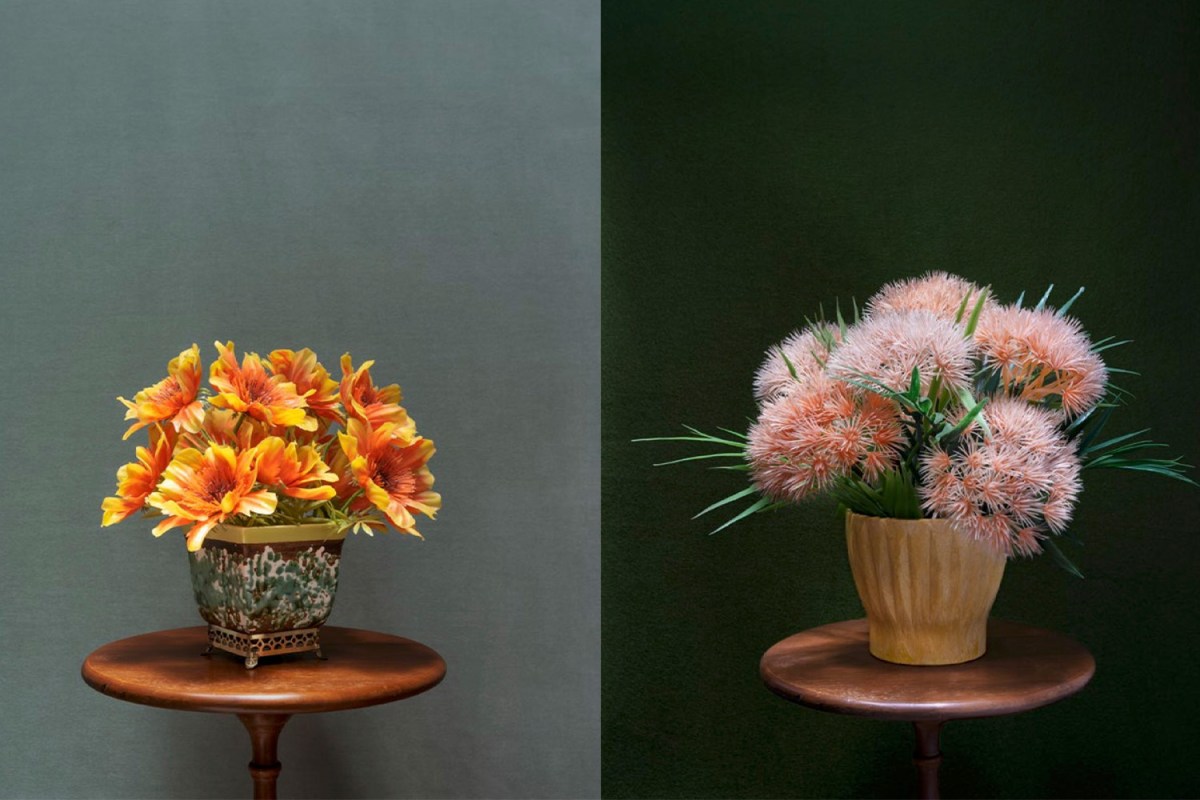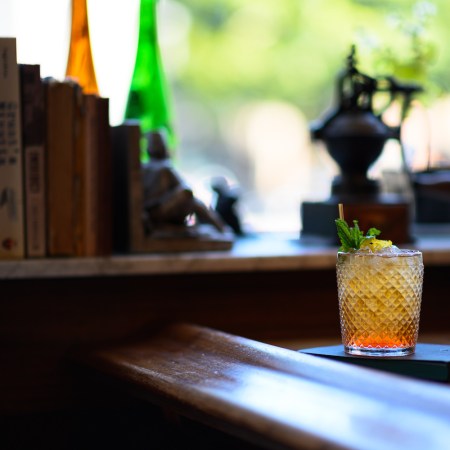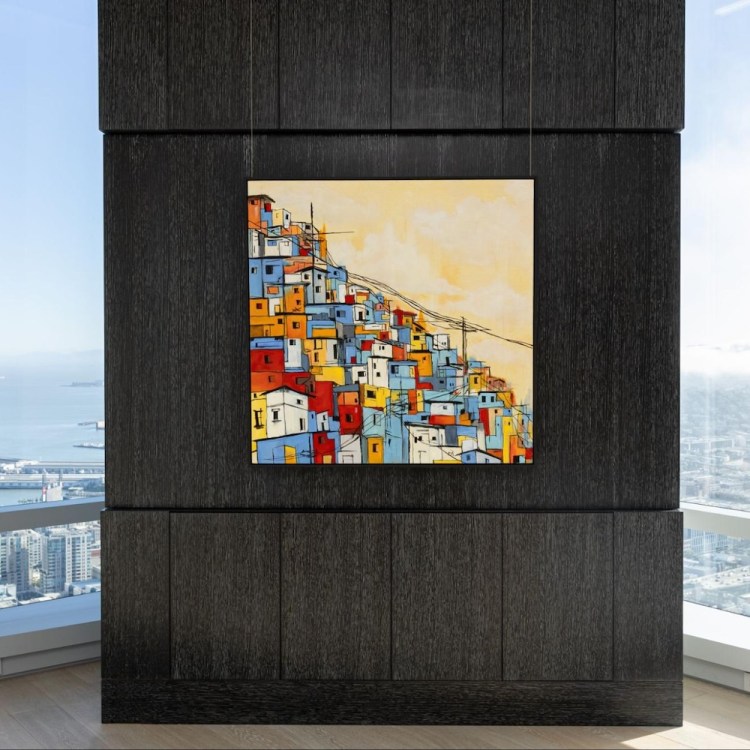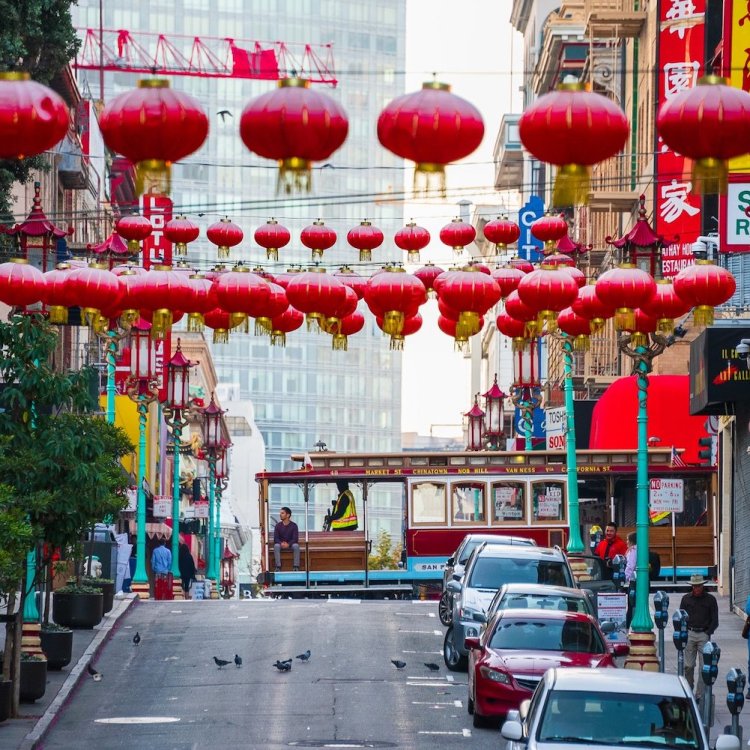Pretty posies, foliage arranged seemingly just so around a black void and pink Belladonna sprouting in a barren side yard. At first glance, the photos in J. John Priola’s new book are perhaps simply snapshots of ikebana-like arrangements and Google Street View-style captures of plants surviving against the odds in sometimes rather stark urban settings. Much like the centuries-old Japanese art of flower arranging, his images are spare but deliberate in their construction.
They offer an invitation, Priola says, for people to look a little longer.
“I’m a visual artist, and composition, like beauty, is my friend,” he says. “I love all that, but this stuff is not on the surface, and I don’t make it easy. I like the distance photography supplies as it allows more of an unfolding to understand a picture. It seeps in slowly.” In the book, selects from his GROW: Houseplant Portraits series illustrate an abstracted form of storytelling. “If someone looks long enough or it begins to resonate, they’ll start to think about the owner or the caregiver more than the actual plant. The image becomes the vehicle to the meaning itself,” he explains.
The idea for Natural Light percolated for several years, but the pandemic allowed Priola to finally bring it to life. Featuring work from 12 different series made over 20 years that “investigates the natural and unnatural world,” each section is prefaced with a photograph taken by his mother. Growing up on a farm in Colorado, Priola didn’t appreciate those bucolic formative years until he was older. Summers coincided with growing season and months of hard work, but he always gravitated toward plants (during high school, he turned a spare room into an ad hoc greenhouse) and later photography, thanks to Mrs. Priola, who always had a camera out.
“I used her SX-70 Polaroid to start with, and the pictures would appear in front of my eyes. It was motivating,” he says. A woman ahead of her time, Carol Priola cultivated blue spruce and ash maple saplings to sell when the farm struggled.“She never studied to become a horticulturist but was the kind of woman who, had she been born in a different era, would have been an entrepreneur,” Priola explains. “She raised beautiful landscape trees and sold them when they matured and put all of her kids through college with the proceeds.” Priola says the book is a tribute to her photographs. It also features some of the trees that she grew. In the section titled “Tree Labels,” several images are included of saplings long-since grown bought by the care facility where she spent her final days. Full circle. As Priola puts it, “Two generations of people who have harnessed their awe of nature.”
How Leica Made It to 100: Gold-Standard Cameras and the “Human Eye”
As the German camera masters celebrate their centennial, we look back at the beginnings of the brand and the anniversary gear they’re rolling outDespite having his work in permanent collections of major museums like the San Francisco Museum of Modern Art and The Metropolitan Museum New York, and 25-year tenure as a senior lecturer in the photography department at the San Francisco Art Institute, Priola doesn’t like the label “photographer.” “It’s limiting because there are preconceived notions about what it means,” he says. The term “shoot” versus “take” is also important. “Shooting has a different connotation than taking. It’s the difference between a photographer and an artist. I like taking pictures,” he clarifies.
Since graduating with an MFA in 1987, Priola has seen a seismic shift in the medium of visual arts and photography and says the latter has become increasingly ubiquitous. These days, anybody can take a good picture. A “hardcore film person,” he went into the digital world “kicking and screaming” but has now fully embraced it — even finding a home for long-running project Plant Sightings on Instagram. While Priola takes photos of houseplants and windows on his walks with a smartphone, he uses a medium-format digital camera for everything else. “The other work I do is more intentional. More thought out and not by happenstance,” he says.
Much like vinyl has enjoyed a recent renaissance, Priola believes analog also has its place in art — it’s just a different way of capturing light. Even the print emanates differently. “With digital, ink is on the surface of the paper, but with analog, it’s in the surface. I still make gelatin silver prints, but not as much,” he says. When I ask if the immediacy of digital takes him back to the instant satisfying fix of Polaroids from his early photo-taking days, he laughs and says it’s not that deep.
“Both mediums are difficult, challenging and exciting,” he answers. “It’s like the difference between an oil and acrylic painting, just a different process.” On the subject of “process,” as our chat concludes, I ask how he feels his work has evolved over a nearly four-decade career. “Grasping tighter and tighter to metaphor,” he tells me. “Because all those things, all those pictures, whether they’re a tree in the world or a flower, they’re all real people. They all stand for something.”
Priola has a whirlwind few months ahead. First, he’ll attend the international photography fair Paris Photo, concluding with a book signing on Nov. 11. Then, it’s back to San Francisco for the launch of Natural Light at Saint Joseph’s Art Society on Nov. 16 with readings by Rita Bullwinkel and Claire Daigle, who both wrote essays for the book. He shares that a portion of proceeds are being donated to non-profit City of Dreams. “An amazing organization that works its butt off and runs these really cool gardening programs for kids around Bay View,” he notes.
In January, his latest solo show — which centers on his monograph but will also feature new work — opens at the Anglim/Trimble Gallery and runs through the end of February.
This article was featured in the InsideHook SF newsletter. Sign up now for more from the Bay Area.

























